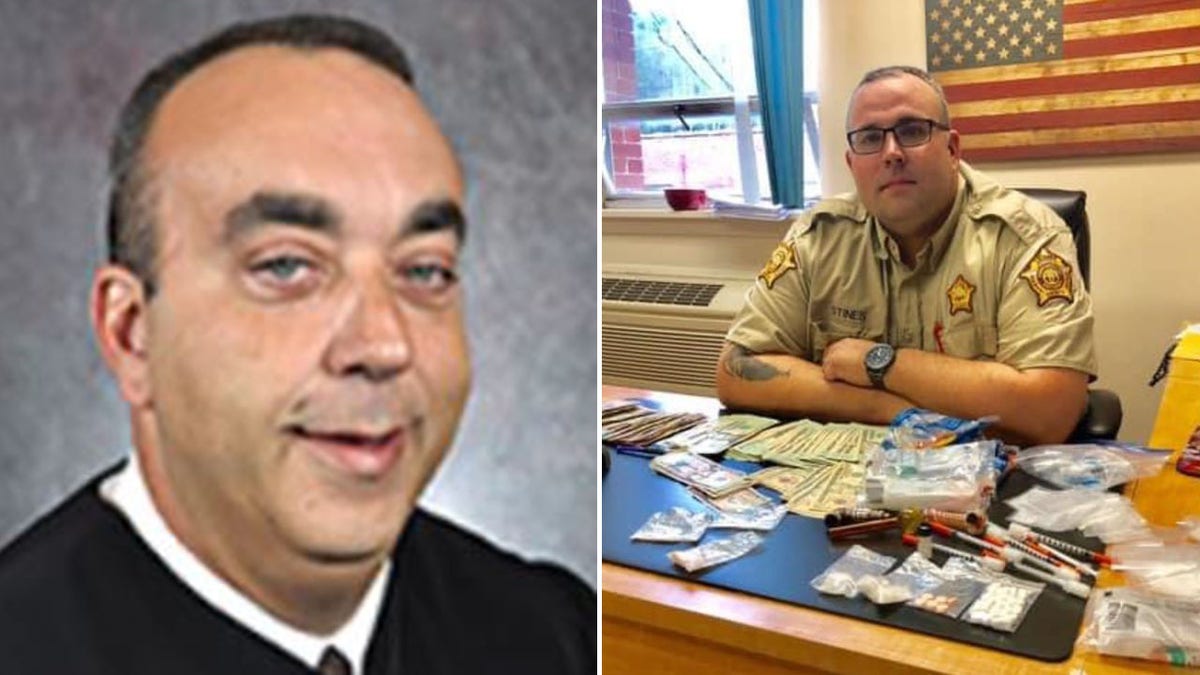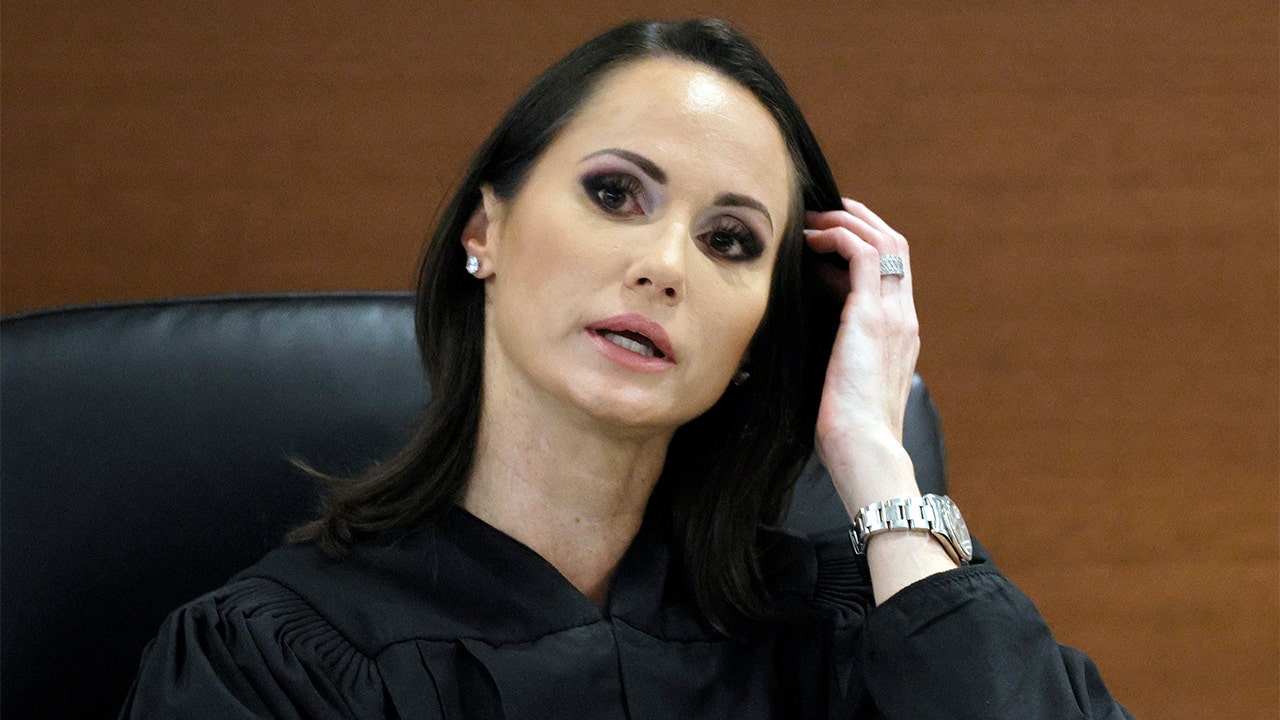Imagine this—a peaceful town turned upside down by an unimaginable event. A sheriff, the very symbol of law and order, pulls the trigger on a judge, the epitome of justice. The phrase "sheriff shoots judge" has become a headline that sends shockwaves through communities across America. This story isn’t just about a single incident; it’s about trust, power, and the fragile balance between those who enforce the law and those who interpret it.
When you hear the words "sheriff shoots judge," your mind immediately races to questions—why? How could this happen? Was it a case of personal vendetta, or was there something deeper at play? In this article, we’ll dive deep into the details surrounding this shocking event, exploring the backstory, the players involved, and the implications for society as a whole.
So buckle up, because we’re about to take you on a journey through one of the most controversial and talked-about incidents in recent history. This isn’t just a story; it’s a wake-up call for us all.
Read also:From Saturday Night Live To Only Murders In The Building Martin Shorts Journey And Net Worth
Table of Contents
- Background of the Incident
- Biography of the Sheriff
- Biography of the Judge
- Possible Motives Behind the Shooting
- Legal Implications and Repercussions
- Public Reaction and Media Coverage
- Psychological Impact on the Community
- Changes in Law Enforcement Protocols
- Impact on the Judicial System
- Conclusion: Lessons Learned
Background of the Incident
Let’s rewind to the day it all went down. The small town of Springfield was like any other—quiet, peaceful, and filled with everyday life. But everything changed in an instant when reports emerged that the local sheriff had shot the presiding judge during a heated courtroom session. Witnesses say tensions had been building for weeks, but no one saw this coming.
The courtroom was packed that day, filled with lawyers, defendants, and spectators. The judge was presiding over a high-profile case, and tensions were already running high. Suddenly, chaos erupted as the sheriff drew his weapon and fired several shots. The judge was rushed to the hospital, where he later succumbed to his injuries.
But what led to this moment? Was it a sudden outburst, or had the seeds of conflict been sown long before? To understand the full picture, we need to look at the individuals involved and the circumstances surrounding the incident.
Key Details of the Shooting
- Location: Springfield County Courthouse
- Date: March 15, 2023
- Time: 10:45 AM
- Victim: Judge Thomas Carter
- Perpetrator: Sheriff James Peterson
Biography of the Sheriff
James Peterson, the man behind the trigger, was no stranger to the community. He had served as the sheriff of Springfield County for over 15 years, earning a reputation for being tough but fair. Born and raised in the town, Peterson was a local hero, known for his dedication to keeping the streets safe.
But beneath the surface, there were whispers of personal struggles. Peterson had recently gone through a bitter divorce and was reportedly battling depression. Some sources suggest he had been drinking heavily in the weeks leading up to the shooting, though this remains unconfirmed.
Sheriff James Peterson's Data
| Name | James Peterson |
|---|---|
| Age | 47 |
| Years of Service | 15 |
| Marital Status | Divorced |
Biography of the Judge
Judge Thomas Carter was a respected figure in the legal community. Known for his sharp mind and impartiality, Carter had presided over some of the most complex cases in the county. His courtroom was a place where justice was served without bias, and his decisions were often praised for their fairness.
Read also:Eileen Fisher Net Worth A Journey Through Fashion And Fortune
However, not everyone was pleased with his rulings. In the months leading up to the shooting, Carter had made several controversial decisions, including a ruling that went against the sheriff’s department in a high-profile corruption case. Some speculate that this ruling may have played a role in the events that unfolded.
Judge Thomas Carter's Data
| Name | Thomas Carter |
|---|---|
| Age | 55 |
| Years of Service | 20 |
| Marital Status | Married |
Possible Motives Behind the Shooting
The question on everyone’s mind is, why did the sheriff shoot the judge? While the investigation is still ongoing, several theories have emerged. Some point to personal grievances, while others suggest a deeper systemic issue.
One theory is that Sheriff Peterson was upset over Judge Carter’s ruling in the corruption case. The ruling had exposed alleged misconduct within the sheriff’s department, leading to several officers being suspended. Peterson may have felt betrayed by the judge, seeing the ruling as a personal attack.
Another theory is that Peterson’s mental health issues played a significant role. Depression and alcoholism can cloud judgment and lead to impulsive actions. While this doesn’t excuse his behavior, it does shed light on the complexities of the situation.
Factors to Consider
- Personal grievances between the sheriff and the judge
- Controversial legal rulings affecting the sheriff’s department
- Mental health issues and substance abuse
Legal Implications and Repercussions
The shooting of a judge by a sheriff raises serious legal questions. How does the justice system handle such a breach of trust? What happens to the sheriff, and how does the community move forward?
Prosecutors are currently reviewing the case to determine the appropriate charges. While self-defense may be a consideration, the evidence suggests this was a premeditated act. If convicted, Sheriff Peterson could face life in prison or even the death penalty, depending on the jurisdiction.
Meanwhile, the legal community is grappling with the implications for the judicial system. How can judges feel safe in their own courtrooms? What measures can be taken to prevent similar incidents in the future?
Potential Outcomes
- Charges of murder or manslaughter
- Reforms in courtroom security protocols
- Increased focus on mental health support for law enforcement
Public Reaction and Media Coverage
The public reaction to the "sheriff shoots judge" incident has been a mix of shock, anger, and sadness. Residents of Springfield are struggling to come to terms with the fact that one of their most trusted figures could commit such an act. Social media has been ablaze with discussions, with hashtags like #JusticeForJudgeCarter trending nationwide.
Media coverage has been extensive, with national news outlets dedicating hours of airtime to the story. Reporters have interviewed witnesses, legal experts, and community leaders to piece together the events leading up to the shooting. The sheer scale of the coverage highlights the gravity of the situation.
But not everyone agrees with the narrative being presented. Some community members have expressed sympathy for Sheriff Peterson, pointing to his years of service and the personal struggles he faced. Others argue that his actions cannot be excused, regardless of the circumstances.
Public Sentiment
- Shock and disbelief among residents
- Divided opinions on the sheriff’s motives
- Increased scrutiny of law enforcement
Psychological Impact on the Community
The psychological impact of the "sheriff shoots judge" incident cannot be overstated. For a community that prided itself on its sense of safety and security, this event has left deep scars. Trust in law enforcement has been shaken, and many residents are questioning the very foundations of their justice system.
Counselors and mental health professionals have reported a surge in demand for services in the weeks following the shooting. People are struggling to process what happened and how it will affect their lives moving forward. The incident has also sparked conversations about mental health awareness and the need for better support systems.
For the families of the victims, the pain is even more acute. Judge Carter’s family has spoken out, calling for justice and accountability. They have also emphasized the need for healing and reconciliation within the community.
Community Response
- Increased demand for mental health services
- Community dialogues on trust and accountability
- Efforts to promote healing and reconciliation
Changes in Law Enforcement Protocols
In the wake of the shooting, law enforcement agencies across the country are reassessing their protocols. How can officers be better equipped to handle personal and professional challenges without resorting to violence? What measures can be taken to prevent a repeat of this tragedy?
Some departments are implementing mandatory mental health screenings and offering more robust support systems for officers. Others are exploring the use of body cameras and other technologies to ensure transparency and accountability. These changes are not just about preventing future incidents; they’re about rebuilding trust with the communities they serve.
Meanwhile, training programs are being updated to include scenarios that address the psychological pressures faced by law enforcement officers. The goal is to equip officers with the tools they need to manage stress and conflict effectively.
Proposed Reforms
- Mandatory mental health screenings
- Increased use of body cameras
- Updated training programs
Impact on the Judicial System
The "sheriff shoots judge" incident has also had a profound impact on the judicial system. Judges across the country are reevaluating their safety measures and considering new protocols to protect themselves and their staff. The incident has highlighted the need for a more secure and supportive environment for those who administer justice.
Some courts are implementing stricter security measures, including metal detectors and armed guards. Others are exploring the use of virtual hearings to reduce the risk of violent confrontations. These changes are not without controversy, as some argue they could undermine the openness and accessibility of the justice system.
Ultimately, the incident serves as a reminder of the importance of trust and collaboration between law enforcement and the judiciary. Both institutions must work together to ensure that justice is served fairly and safely.
Reforms in the Courts
- Enhanced courtroom security measures
- Virtual hearings to reduce risks
- Improved collaboration between law enforcement and the judiciary
Conclusion: Lessons Learned
The "sheriff shoots judge" incident is a tragedy that has left an indelible mark on the community of Springfield and the nation as a whole. It serves as a stark reminder of the fragility of trust and the importance of mental health awareness in law enforcement. While the investigation continues, one thing is clear: this is a wake-up call for us all.
As we move forward, it’s crucial that we learn from this incident and take steps to prevent similar tragedies in the future. Whether through improved mental health support, enhanced security measures, or better collaboration between law enforcement and the judiciary, the goal must be to ensure that justice is served safely and fairly.
So, what can you do? Share this article with your friends and family, start conversations about mental health and accountability, and stay informed about the latest developments in the case. Together, we can work towards a safer, more just society.


